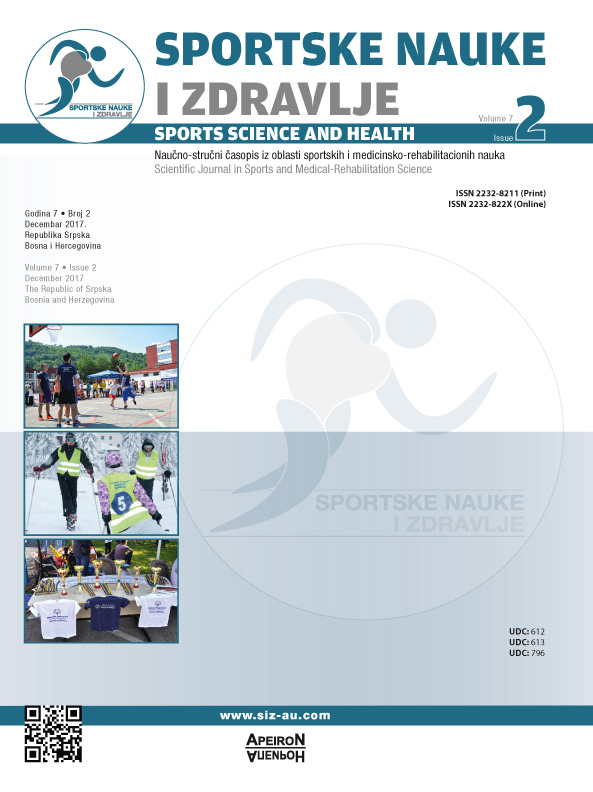Benefits of Strength Training for Elderly Women // Dobrobiti treninga snage za žene treće životne dobi
DOI:
https://doi.org/10.7251/SSH1702077SAbstract
The aging process is associated with loss of skeletal muscle mass and increase in intramuscular fat, the latter also defined as muscle attenuation. Muscle weakness, termed sarcopenia and dynapenia, is a normal age-related phenomenon, occurring at a rate of 1% to 5% annually from the age of 30. This rate means that given typical patterns of physical activity, a 70-year-old woman could have 50% to 70% less strength than she had at age 30. Contrary to long held beliefs, the muscles of elderly women (i.e. aged 65 years and older) continue to be adaptable, even into the extremes of old age, particularly if their muscles are significantly overloaded during training. Therefore, effective strengthening practices must be employed to maintain the highest level of function and achieve optimal aging in elderly women. Done regularly (2-3 times a week), strength training preserve bone density, independence and vitality with age. In addition, strength training also has the ability to reduce the risk of osteoporosis and the signs and symptoms of numerous chronic diseases such as heart disease, arthritis and type 2 diabetes, while also improving sleep and reducing depression. Finally, though muscle strength has been recognized as an important predictor for reduced functional performance, emerging evidence suggests that muscle power (the product of force time velocity or the rate of performing work) is highly effective to elicit substantial improvements in maximal mechanical muscle function (rapid force generation, muscle power and muscle strength) and in functional performance in old and very old women.Downloads
Published
2018-01-10
Issue
Section
Чланци
